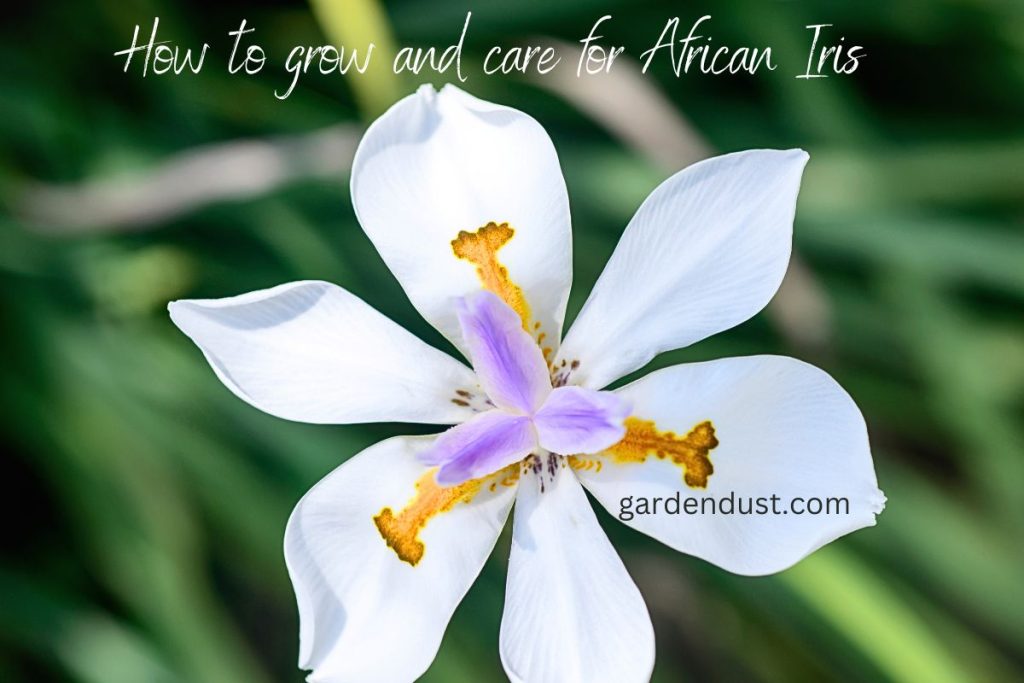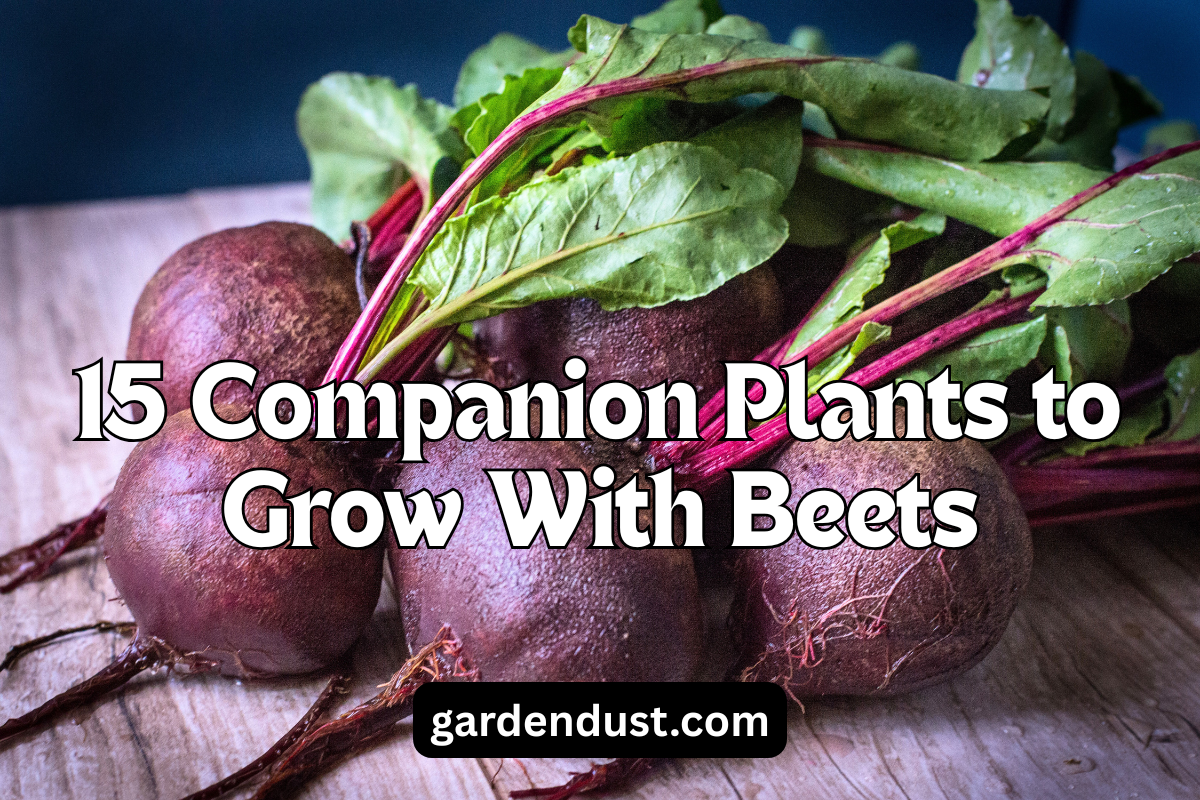African Iris (Dietes iridioides), also known as Fortnight Lily or Butterfly Iris, is a stunning perennial plant native to South Africa. Its elegant sword-like leaves and delicate, iris-like flowers make it a popular choice for gardens and landscapes. If you’re interested in adding this beauty to your garden, read on to discover a comprehensive guide on how to grow and care for African Iris. Let’s start….
Growing And Caring Guidelines:-
Choosing the Right Location
African Iris thrives in full sun to light shade. It’s important to choose a location that receives at least 6 hours of sunlight per day. While it can tolerate some shade, too much shade can result in fewer flowers and less vigorous growth. The plant is also quite versatile when it comes to soil types but prefers well-draining soil. Amending the soil with organic matter can help improve drainage and provide necessary nutrients.
Planting
The best time to plant African Iris is in the spring or fall. Dig a hole that is twice the diameter of the plant’s root ball and just as deep. Space multiple plants about 2 to 3 feet apart to allow for proper growth. Gently remove the plant from its container, loosen the roots, and place it in the hole. Backfill with soil and water thoroughly to eliminate air pockets.
Watering
African Iris is relatively drought-tolerant once established. However, during its initial growth and establishment period, it’s important to keep the soil consistently moist. Water deeply once a week, adjusting the frequency based on rainfall and local climate conditions. As the plant matures, it will require less frequent watering.
Fertilizer
Regular fertilization helps promote healthy growth and abundant flowering in African Iris. Feed the plant with a balanced, slow-release fertilizer in the spring, just as new growth begins. Avoid over-fertilizing, as excessive nutrients can lead to lush foliage at the expense of flowers.
Mulching
Applying a layer of mulch around the base of the plant helps retain soil moisture, suppress weed growth, and regulate soil temperature. Use organic mulch, such as wood chips or compost, and spread it about 2 inches deep. Keep the mulch away from direct contact with the plant’s stems to prevent rot.
READ ALSO:-How To Grow And Care For African Daisy
Pruning
Pruning is essential to maintain the health and appearance of African Iris. Remove any dead or yellowing leaves regularly to keep the plant looking tidy. After the flowering period, trim back the spent flower stalks to encourage new growth and potentially trigger a second blooming later in the season.
Winter Care
African Iris is hardy in USDA zones 8-11, making it relatively frost-tolerant. In cooler regions, it’s a good idea to apply a layer of mulch around the base of the plant in the late fall to help protect the roots from freezing temperatures. If you experience harsh winters, consider growing African Iris in containers so you can bring them indoors during the colder months.
Propagating African Iris: Methods and Tips
Propagating African Iris (Dietes iridioides) allows you to expand your collection of these beautiful plants, share them with friends and family, or rejuvenate older clumps. This versatile perennial can be propagated through two primary methods: division and seed propagation. In this guide, we’ll explore both techniques and provide tips for successful propagation.
1. Division:
When to Divide: The best time to divide African Iris is during its active growing seasons, which are spring and fall. Dividing in the early morning or late afternoon when temperatures are cooler is ideal to reduce stress on the plants.
Steps:
- Prepare: Dig up the clump of African Iris you intend to divide. Gently shake off excess soil to expose the rhizomes.
- Separate: Carefully separate the rhizomes by hand or using a sharp, clean garden tool like a spade or knife. Each division should have healthy roots and at least one fan of leaves.
- Trim: Trim any damaged or diseased roots and leaves. A division with healthy roots and foliage has a better chance of successful establishment.
- Replant: Choose a new planting location with well-draining soil and proper sunlight conditions. Dig a hole large enough to accommodate the divided section and position it at the same depth it was originally growing.
- Water: Water the newly planted divisions thoroughly to settle the soil and eliminate air pockets. Maintain consistent moisture as the divisions establish.
READ ALSO:-How To Grow And Care For Fairy Duster (Calliandra Eriophylla)
2. Seed Propagation:
Harvesting Seeds: African Iris produces seed pods after flowering. Allow the pods to mature on the plant until they turn brown and begin to split open. Collect the seeds from the pods once they’re fully dry.
Steps:
- Preparation: Fill small pots or seed trays with a well-draining seed-starting mix. Moisten the mix before planting.
- Planting: Sow the African Iris seeds on the surface of the soil, pressing them gently into the mix without covering them with additional soil. Place the pots or trays in a warm, well-lit area.
- Moisture: Keep the soil consistently moist but not waterlogged. You can cover the pots or trays with plastic wrap to create a mini greenhouse effect that helps retain moisture.
- Germination: African Iris seeds can take several weeks to germinate. Once you see seedlings emerging, remove the plastic wrap and provide good air circulation.
- Transplanting: When the seedlings have developed a few sets of true leaves and are large enough to handle, carefully transplant them into larger pots or directly into the garden. Space them according to the recommended guidelines for mature African Iris plants.
Propagation Tips:
- Healthy Stock: Always choose healthy parent plants for propagation. Unhealthy or stressed plants may lead to weak offspring.
- Sterilize Tools: Use clean and sterilized tools when dividing or cutting rhizomes to prevent the spread of diseases.
- Root Growth: Prioritize divisions with strong, healthy roots. This will ensure successful establishment when replanting.
- Patience: Both division and seed propagation require patience. Allow time for new divisions or seedlings to establish before expecting vigorous growth.
- Labeling: When propagating multiple plants, label each division or pot to keep track of varieties and planting dates.
- Protection: Newly divided or germinating plants may need protection from harsh weather conditions or extreme temperatures.
- Adaptation: Keep in mind that plants grown from seeds might exhibit slight variations from their parent plants in terms of flower color or growth habit.
Preventive Measures:
- Sanitation: Regularly remove dead or diseased plant material to prevent the spread of pests and diseases.
- Proper Planting: Plant African Iris in well-draining soil to prevent conditions that favor fungal diseases.
- Spacing: Adequate spacing between plants encourages air circulation and reduces the risk of disease spread.
- Watering: Water at the base of the plant early in the day to allow foliage to dry before evening, minimizing fungal growth.
- Mulching: Apply mulch around the base of the plant, but avoid piling it against the stem to prevent moisture retention and potential disease development.
- Resistant Varieties: If available, choose African Iris varieties that are known for their resistance to certain pests and diseases..
Common Pests and Diseases
African Iris (Dietes iridioides) can face pests like aphids, which cluster on leaves, and snails/slugs causing holes in foliage. Leaf spot diseases present circular spots, while root rot, linked to poor drainage, results in yellowing and wilting. Bacterial soft rot causes foul-smelling tissue softening, often due to excessive moisture. Preventive steps include sanitation, well-draining soil, proper spacing, and vigilant observation. Regularly removing affected parts, watering at the base, and considering resistant varieties can help maintain the health and allure of these elegant plants.
Growing and caring for African Iris can be a rewarding experience for both novice and experienced gardeners alike. With the right conditions and attention to detail, you can enjoy the beauty of its elegant foliage and charming flowers year after year. Remember to provide ample sunlight, well-draining soil, and a regular maintenance routine to keep your African Iris thriving and looking its best. Whether used as a focal point in a garden bed or as part of a mixed border, this versatile plant is sure to add a touch of elegance to any outdoor space. Happy Gardening…
FAQ
When is the best time to divide African Iris?
The optimal times to divide African Iris are during its active growing seasons: spring and fall. Dividing in the early morning or late afternoon when temperatures are cooler reduces stress on the plants. Carefully separate the rhizomes, ensuring each division has healthy roots and at least one fan of leaves. Replant divisions at the same depth they were originally growing and water thoroughly.
How can I protect African Iris from pests and diseases?
To protect African Iris from pests and diseases, practice good garden hygiene by removing dead or diseased plant material. Ensure proper spacing between plants to promote air circulation and reduce disease spread. Avoid overhead watering, as wet foliage can encourage fungal growth. If you notice pests like aphids or snails, address them promptly with methods such as handpicking, spraying with water, or using appropriate insecticides. Regular observation and quick action are key to maintaining healthy African Iris plants.
Can African Iris tolerate shade?
Yes, African Iris can tolerate light shade, but it generally prefers full sun to thrive and produce more flowers. In shadier conditions, the plant might have fewer blooms and less vigorous growth. If planting in a shaded area, ensure it still receives at least 4-6 hours of indirect sunlight to promote healthy growth and flowering.
How do I encourage a second blooming of African Iris?
After the initial flowering period, you can encourage a second blooming of African Iris by trimming back the spent flower stalks. This process, known as deadheading, redirects the plant’s energy from seed production to new growth and potentially triggers another round of blooms later in the season. Additionally, providing adequate water and nutrients during the growing season will help support a potential second flowering.
Are there any companion plants that go well with African Iris?
African Iris can be complemented by various companion plants in a garden setting. Consider pairing them with other drought-tolerant plants like lavender, yarrow, or ornamental grasses to create a water-wise and visually appealing landscape. Low-growing ground covers like creeping thyme or sedum can also provide a nice contrast to the upright foliage of African Iris.
Can I grow African Iris in containers?
Yes, African Iris can be grown in containers, especially in regions where winters are harsh or if you have limited garden space. Choose a large container with good drainage and fill it with a well-draining potting mix. Ensure the container receives sufficient sunlight, and water the plant regularly while allowing excess water to drain. Container-grown African Iris may require more frequent watering than those planted in the ground.
Do deer and rabbits eat African Iris?
African Iris is generally considered deer and rabbit resistant due to its tough and leathery foliage. However, in times of extreme hunger or when natural food sources are scarce, these animals might nibble on the leaves. While African Iris is less likely to be their first choice, it’s still a good idea to monitor the situation and take preventive measures if necessary, such as using deer or rabbit repellents.







